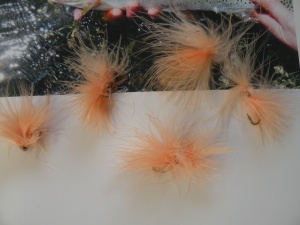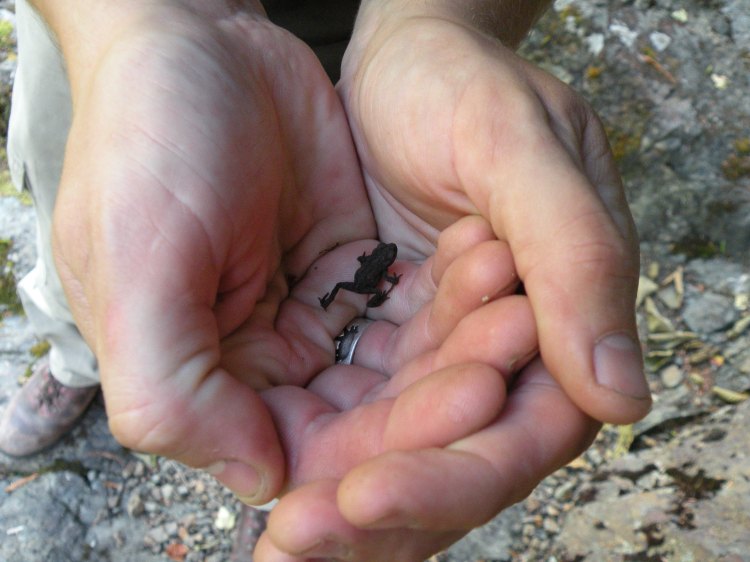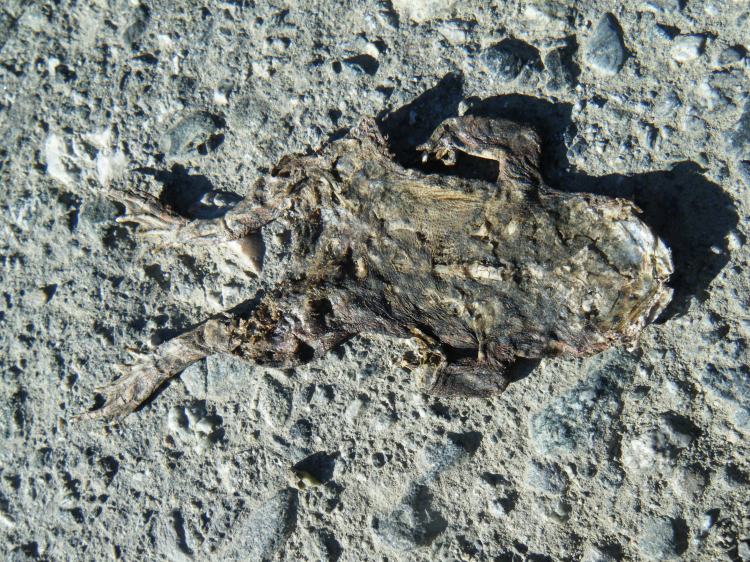While there are many times on a river when the assemblage of fishers lining a river bank resemble an episode of the trailer park boys, there is but one time of the year where the fish themselves avail themselves on flesh flies as Ricky and Julian would jump on a driveway paved with hash or steve french would annihilate a field of weed. It’s that time of year when on the streamside trail the ammonia waft of rotting chum and coho hits your nostrils half a mile from the river and melting salmon are hanging from the lower boughs of trees, there is but one tactic to turn to…flesh flies.
There is usually a lull between runs in November and December, too late for summers, too early for most winter steelhead, and too late for fresh coho or chum, where most of the years fish are spawned out and this fishery fits that time period perfectly. No the technique, flies, and streamside detritus are not pretty, and the upstream dry and tweed types are advised to stay well away, but the results are definitely worth it. The trout almost become positively drunk on this rotten flesh and are feeding with abandon. If you like catching cutthroat, browns, rainbows, or bulls both sea run or resident from rivers hosting a decent salmon run of any species then this is just another tool in the arsenal to extend the season past the first blowouts of the fall that for many effectively end their river trout season.
A flesh fly, is usually either a weighted or unweighted chunk of marabou or rabbit fur in a pale peach to tan an inch to three inches long. If you cant visualise this then go to a salmon river in november find a stick and poke a hole in the side the of a dead chum on the bank. That’s right, it’s a sort of a rotten peach colour. The colours of flesh actually do vary a bit depending on the fishery and state of decomposition eg. white spring flesh is different than coho or sockeye.
When the banks are littered with these it’s prime time
Usually the approach is to dead drift the flies into the trout’s feeding lanes just like globs of rotting salmon would drift downstream, and most of the time this is the way to fish them, however I have caught fish swinging , stripping, and hanging the fly. Tailor the weight of the fly to the water conditions, if fish are sitting at the edge of a drop off and the water is up and moving then cast up stream with a weighted pattern to get it down into their lane, you don’t often see salmon flesh floating on the surface downstream. If the water is lower then you’d be advised to use little or no weight as I have watched people incidentally snagging spawning salmon by using too heavy an egg pattern when targeting trout sitting behind those said spawning salmon, especially in the lower water earlier in the fall.
If this is all a little ugly for you, and you want to class it up a bit then what I suggest is tying small peach coloured intruders or something like a borden special and then swinging them and letting them hang into likely spots for half a minute or so, like I said these trout are drunk and high this time of year and will often smack flesh flies swinging or even when they are hanging seemingly mid river. Flesh patterns are a nice alternative (with a smaller time frame) to egg patterns which understandably many don’t or won’t use.
The best setup to use is entirely your choice and also dependant on water conditions, It can be almost like steelheading with long casts in big water and big tips, or it can be roll casting little flies on a five weight in low water, the biggest thing is to get the flesh flies into the vicinity of feeding trout if you do that then chances are you will find success. For what it’s worth I usually use a 9’3 6 wt, without issue.
While I’ve never encountered it I have even read about sea runs at the beach and estuary taking flesh flies when big rains wash chum and chinook carcasses out of smaller creeks. There are many different versions of this fishery to explore, tie up a few flesh flies and keep them in your box for that one day where you find yourself on the river during these conditions, you may just be in for a suprise.










